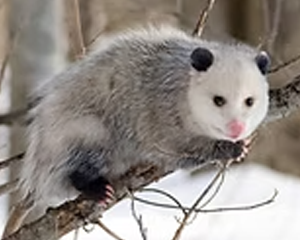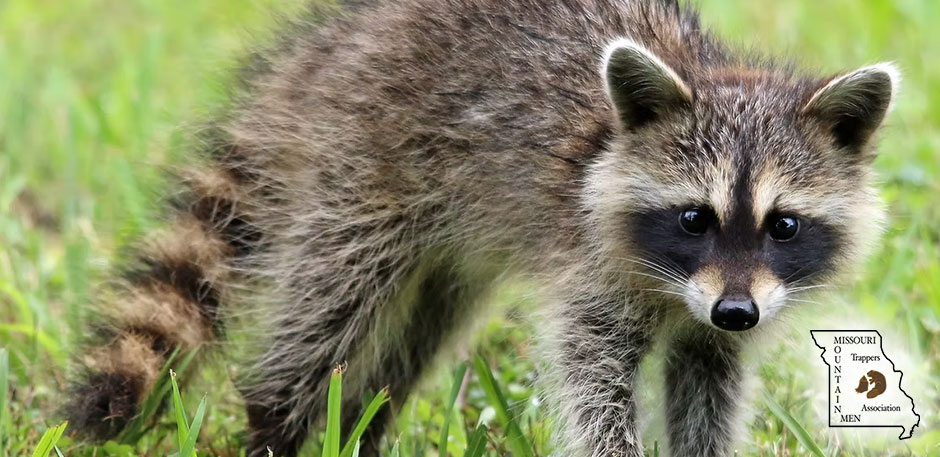Opossum - Commonly Trapped Furbearer
UTILIZING OUR ABUNDANT MISSOURI WILDLIFE

Opossum
Fast Facts
- Weight: ~10 pounds (adult male typical)
- Teeth: 50 (most of any North American mammal)
- Gestation: ~13 days before birth
- In Pouch: ~80 days attached and developing
- Notable: Only North American marsupial
- Life Span: up to ~6 years
Fossil evidence places opossums in North America for roughly 70 million years. As marsupials, females carry and nurse their tiny newborns in a pouch. Their nearly hairless, prehensile tails help them grasp and carry items—unique among our native furbearers. Though not famed for smarts, they’re caught by beginners and seasoned trappers alike.
Description
Opossums are grayish with bare ears and a mostly naked tail. Males are usually larger, reaching up to about 36 inches overall, including a 12–14 inch tail; average weights are around seven pounds for males and five for females, with occasional larger males. Ears are soft, leathery, and often white-trimmed; in colder regions, frost damage can leave ragged edges. A scent gland beneath the male’s chin can stain the chest yellow. Each foot has five toes—hind feet include a thumb-like toe without a nail—while all other toes have nails. They have 50 teeth, including four canines. Brain size is small relative to body, and color can vary from darker grays to rare reddish tones.
Reproduction
In most of their range, females commonly raise two litters per year (far northern areas often see one). Peak breeding typically occurs in February and again in June. About 13 days after conception, extremely small young are born and climb to the pouch, where they attach to a nipple for six to seven weeks. Around 80 days after birth they begin venturing out, sometimes riding on the mother’s back. First litters tend to be weaned by mid-May, with the second litter following a few weeks later. Average litter sizes run about 7–8 in southern areas and around 10 in northern areas. Six years is considered old for an opossum.
Habits
Opossums sometimes respond to threats by “playing possum”—a tonic immobility where they appear unconscious, drool, and go limp. It’s more likely in daylight and may be a stress-induced, involuntary state. They also spend time grooming and are generally clean animals.
They favor underground dens and often rake together leaves or grass for bedding, carrying it with their prehensile tails. They climb well—especially smaller trees where the tail aids grip—and will use hollow trees when underground sites aren’t handy. Den use can be irregular except during rearing; natal dens are reused more consistently.
Opossums don’t truly hibernate but put on fat in colder climates. During extended severe cold or deep snow, they may still travel for food, sometimes suffering frostbite on ear tips and tail ends. Smell is well developed and guides much of their foraging. Diet includes insects, worms, eggs of ground-nesting birds, small mammals, fruits in season, and carrion (roadkill can be a frequent food source). A typical home range is about 50 acres; they aren’t strongly territorial and ranges often overlap. Quality habitat may support ~20 animals per square mile. They’re usually found within about 750 yards of water.
Range
Opossums occur as far north as New York (occasionally into Maine). They don’t thrive in arid regions or the Rocky Mountains.
General
They aren’t considered serious predators of most wildlife, though they can impact ground-nesting birds and eggs. By scavenging carrion, they provide a cleanup service. While pelts have modest value, harvests can exceed a million animals annually in some years, contributing millions of dollars in fur value. In some areas, opossum meat is eaten.
Contact Missouri Trappers Association
Get in touch with the Missouri Trappers Association by filling out the contact form. We appreciate your support!
For questions regarding your membership, please call
Joslyn Search: (660)292-1911


